Volvo’s got something pretty much no one else has – a high-performance compact wagon.
It’s the Polestar version of the V60 wagon, 367 horsepower and all.
You may not have heard of Polestar.
It is to Volvo what M is to BMW and AMG is to Mercedes-Benz. It means speed. And it’s smart smart policy, putting speed in a wagon – and not only because it gives Volvo something to sell that no one else is selling.
Smart – because the thing that Volvo used to sell – safety – is something everyone sells now.
All new cars have to sell this now. And more to the point, everyone has to buy it. Because the government has mandated it. Air bags, back-up cameras, crumple zones, yada yada yada.
Every new car has all the things – or at least most of the things – that used to be unique to Volvo’s cars – or which Volvo usually had first or more of.
And that’s why it’s smart to start selling something else.
The V60 is Volvo’s entry-level compact wagon, similar to the Audi A3 wagon, BMW 3 wagon and the no-longer-sold-here Mercedes C-Class wagon.
The Polestar version of the V60 is turbo and supercharged. Which gets not far from 400 hp out of just 2.0 liters of engine. And gets you to 60 in about 4.4 seconds.
Which isn’t similar to anything you can get in a compact-sized Audi, BMW or Benz wagon.
Such speed does not come cheap, of course.
The Polestar-ized V60’s base price is $61,600 – a $20k and change premium over the $38,250 Volvo asks for for the standard-issue version of the V60.
But when you’re the only one selling wagon speed, you can pretty much name your price.
For 2018, the Polestar package includes a new aero package that increases downforce at high speed by 30 percent. The package consists of side skirts, an air diffuser and a rear spoiler – all made of real carbon fiber. In addition, there are new glossy 20-inch black wheels shod with Michelin Pilot Super Sport summer tires and carbon fiber end caps for the side mirrors, along with blue-contrast stitching for the interior.
These cars also come with a cinched down sport suspension and Ohlins shocks, with Brembo high-performance brakes all around (14.6 inch ventilated discs up front and 11.6 inch ventilated and slotted discs out back) launch control and an “active” exhaust – more on this below – with twin bazooka 3.5 inch tailpipes.
Production of the 2018 V60 Polestar will be limited to 1,500 examples.
Wagon speed – and wagon practicality.
Almost four times as much room for cargo (43.8 cubic feet) vs. a similarly sized sedan, such as Volvo’s S60 (12 cubic feet).
Discreet speed.
Very few people know about Polestar and what it means (unlike BMW’s M and Benz’s AMG). Which means using the V60 P’s speed is easier to get away with.
WHAT’S NOT SO GOOD
Back seat is tight (33.5 inches of legroom; BMW 3 wagon isn’t as speedy but has has 35 inches).
Center stack is busy – lots of small buttons.
$60k-plus is a lot to pay for a small wagon – however speedy.
All V60s are powered by a 2.0 liter four cylinder engine – but the Polestar version of the engine is unusually powerful. And the source of its power is unusual, too.
It makes 367 hp at 7,000 RPM and 347 ft.-lbs. of torque at 5,100 RPM. That’s a 122 horsepower upgrade from the standard V60s’s version of the 2.0 liter four (240 hp) and – to put things in perspective – output comparable to V8s twice its size.
Or even three times its size, almost.
The current Dodge Challenger RT’s standard 5.7 liter V8 as a for-instance. That’s nearly six liters and so nearly three times two liters. But it only makes 372 hp, just five more horsepower than the Volvo’s little big man.
And the Challenger RT – a two-door muscle car – not nearly as quick.
Despite its V8 and muscle car strut, the Challenger takes a slow-in-comparison 5.1 seconds to get to 60 vs. 4.4 for the flour-cylinder-powered Volvo wagon. How hilarious is that? It’s almost like Justin Beiber taking the belt from Floyd Mayweather.
Scratch that. From Mike Tyson.
In his prime.
The Polestar four’s spectacular power is made by a double dose of force-feeding. The incoming air is compressed by both a supercharger and a turbocharger. Why not just two turbos? Because with a supercharger to start the party, there is no wait for the party to start.
Superchargers are driven mechanically, by the engine – not by the exhaust. Thus, they produce boost instantly, in tandem with engine revs. Turbos don’t build boost until exhaust pressure builds – which takes a moment or two because combustion has to happen first. This results in a brief lag in between the flooring of the accelerator pedal and actual acceleration.
Other car companies have tried to address the Lag Issue by using a pair of smaller, staged or “twin scroll” turbochargers that build boost sooner. Which they do. But it’s still not immediate. Only a blower can do that. But blowers cost horsepower – remember, engine driven – just like an AC compressor – whereas exhaust-driven turbos produce power for free – or nearly so.
Volvo’s solution is to use one to complement the other.
The supercharger builds immediate boost – but it’s not a huge supercharger, so it doesn’t put a lot of drag on the engine and cost a lot of horsepower. The turbo kicks in to pick up where the blower leaves off.
Combined, the result is immediate – and big numbers – power from not much engine. And with no lag at all.
The mighty mouse engine is paired with a specially calibrated eight-speed Geartronic automatic and heavy-duty all-wheel-drive system, both unique to the Polestar-ized V60.
Also unique is an “active” exhaust that – under full throttle – becomes an open exhaust. An actuator opens a flap that bypasses sound-quieting restrictions in the muffler, allowing the engine to exhale freely through the twin 3.5 inch tips. When you back off the accelerator, the sound backs down, too.
Not that you’ll want to do that often.
Gas mileage – if you’re interested – is 20 city, 27 highway.
There is something to be said for a speedy wagon. And that thing is . . . stealth. Almost better than a radar detector or knowing the local judge (and having the negatives of him with the goat). Wagons don’t attract much attention and when they do, it’s easy to feign innocence. “I was going how fast,” officer?” Deniability is more plausible. Good luck trying that line from the left seat of an AMG Mercedes or BMW M. Besides which you are more likely to have to deal with such a situation simply by dint of driving the AMG’d Benz or the BMW M.
Those things are radioactive – and not only when it comes to cops. 
Other drivers are incited by the sight of them. They will edge forward just enough to keep you from being able to exploit a gap in traffic. Or they’ll ride your tail. Or want to race. This loses its amusement value quickly; leaves you stressed and paranoid. It’s a good thing these cars usually have great stereos and seat heaters. It takes the edge off.
Well, the Polestar’d Volvo has those things, too. Plus the less contumacious presence – especially if you don’t order the neon blue paint – which makes it so much easier to make use of its essence.
Which, per above, is immediate.
While turbo lag has been greatly reduced, it’s still present in every turbocharged car I’ve test driven – which is literally hundreds of them. There is no getting around this; it’s the nature of the thing. The Pause is most noticeable when you floor the accelerator from a dead stop, as when launching from a traffic light. You can almost see the sequence of events. The throttle opens, the engine sucks air, burns fuel – the exhaust pressure builds . . and then comes the boost.
Unless you’ve got a supercharger there to bridge the gap.
The wagon lunges forward like an angry Rottweiler, the supercharger deferring to the turbo once the engine is up to speed. Volvo won’t spill, but total boost is probably in the neighborhood of 30 pounds total. The blower providing around 5-6 lbs of that – maybe less. Just enough to cover what would otherwise be a pothole in the power band.
If you listen closely, you can hear some blower whine, but Volvo mutes the sound effectively – sadly. They all do this, which is odd given that people who buy high-performance turbocharged and supercharged cars are usually people who like the sounds made by turbochargers and superchargers.
Regardless, Volvo has proved there is, indeed, a replacement for displacement. And that mix-and-match turbo-supercharging is a savvy way to have the best of both without the liabilities of either.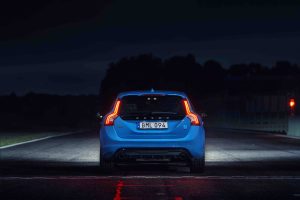
The only hair in the soup being price. Adding a turbo and a blower adds bucks to the bottom line. But, on the other hand, the V60 Polestar is a special car and you are definitely getting something extra for your money.
Such as the capability to smoke a V8 muscle car in your four cylinder wagon – with a plausible it wasn’t me, officer look on your mug.
The ride is a little stiff but it goes with the car and the seats serve as effective countermeasures. They are superb; almost everyone who has driven a recent-issue Volvo will tell you this. They’re so good, you might want to buy the car for that reason alone.
It’s weird about wagons.
For reasons that don’t make sense, they don’t sell well in this country. Notwithstanding that they make a lot of sense. Especially in relation to sedans.
The V60 wagon – which serves as the basis for the V60 Polestar – is based on the S60 sedan; they are basically the same cars, excepting the additional cargo space you get with the wagon. Which is a lot of additional space: 43.8 cubic feet vs. just 12 in the sedan – and it’s even less than that in material terms because it’s isolated space, separate from the rest of the car’s interior – whereas with the V60 not only do have the additional space, it’s connected to the rest of the car’s interior – which makes it feasible to make maximum uses of every bit of it.
There is also the wagon’s under-the-radar profile to place in the Plus column.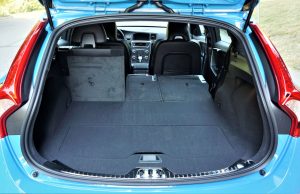
These admirable attributes have not swayed American buyers. Which explains why there are not many wagons at all in the American market, especially in the higher end market – and no high-end compact performance wagons at all. BMW doesn’t sell an M version of the 3 Series wagon in the United States; it is only offered here with the base V60-equivalent 248 hp 2.0 liter gas engine or a turbodiesel engine. The twin-turbo 3 liter six that is available in the 3 Series sedan is not offered in the 3 Series wagon.
Audi’s offering – the A3 Sportback – is a hybrid.
Mercedes doesn’t offer wagon in this class at all. (The $106,950 to start E 63 AMG wagon is in another orbit.)
This is a good thing for Volvo, of course.
It also makes up for some of the V60 Polestar’s deficits – including its cramped back seat. As comfortable as the driver and front seat passenger seats are, the lack of legroom in the second row italicizes the fact that this is a compact wagon.
The BMW 3 wagon might to be able to keep up with the V60 Polestar wagon, but it makes up for this in some ways by not making you make a second trip. It has 53 cubic feet of cargo space – 10 cubic feet more than the Volvo – and it has almost two inches more legroom in its second row.
The Concorde was not known for its spacious seating or cargo hauling abilities, either. What made it a sexy bitch was its four afterburning Olympus turbojets and Mach 2 cruise capability.
Same deal here.
That goes for amenities, too. The Polestar V60 comes standard with everything that’s optional in the lesser V60s – including an excellent Harman Kardon 12 speaker audio rig – as well as a bevy of additional functional and aesthetic upgrades that aren’t available in the lesser V60s. These include all the performance enhancements already discussed as well as carbon fiber interior panels and blue cross-stitching for the leather seats and steering wheel. There is also a Polestar-specific gauge cluster, with a large central tachometer, backlit in red.
Two not-so-great things about the V60 Polestar.
The first is a function of its origins. The V60 wagon is a nice wagon but it’s an entry-level wagon. The Polestar enhancements are functionally comprehensive – you get much more than just a hotted-up engine – but the entry level shows through in areas such as the dashpad and door panels, which use the same material as the regular V60. These aren’t cheesy materials. The regular V60 is still an entry-level Volvo. But there is a big difference in look and feel between an entry-level Volvo like the V60 and a higher-up-the-food-chain Volvo like the V60’s bigger brother, the V90 wagon.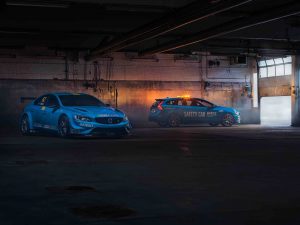
The other thing is the Polestar’d wagon’s center stack controls. They are small and tightly bunched up. On the other hand, there is something to be said for buttons – individual and visually otherwise accessible – vs. a Byzantine series of menus that one must scroll endlessly through to find what you’re after.
THE BOTTOM LINE
Volvo still sells safety, of course.
But it’s no longer the only thing they sell.
I’ll drink to that!
. . .
Got a question about cars – or anything else? Click on the “ask Eric” link and send ’em in!
If you like what you’ve found here, please consider supporting EPautos.
We depend on you to keep the wheels turning!
Our donate button is here.
If you prefer not to use PayPal, our mailing address is:
EPautos
721 Hummingbird Lane SE
Copper Hill, VA 24079
PS: EPautos magnets – they’re back! are free to those who send in $20 or more to support the site. Also, the eBook – free! – is available. Click here. Just enter you email in the box on the top of the main page and we’ll email you a copy instantly!


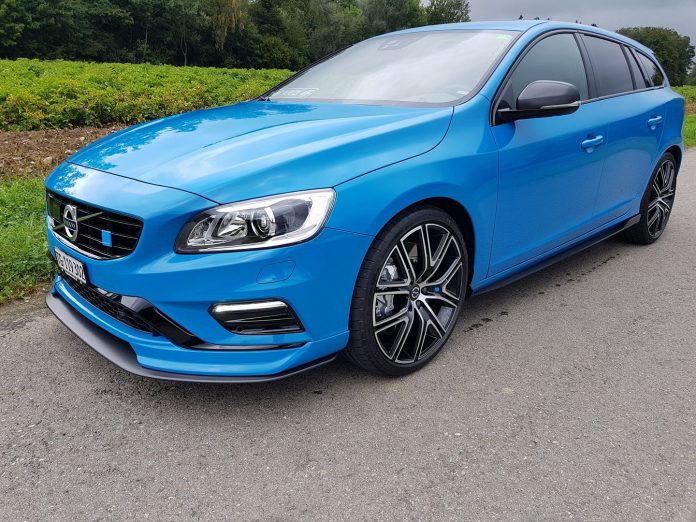


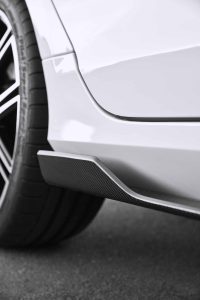
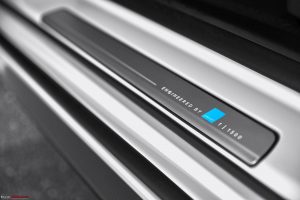
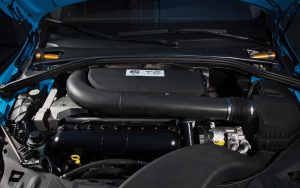

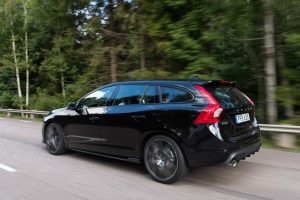

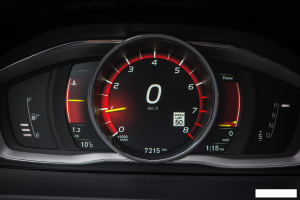









Slightly off topic: too bad GM killed Saab, probably at the behest of GM’s govt. masters under Obama.
Some friends of mine still by only Saabs from the 2000s and just keep them running to 300K and beyond.
https://www.reuters.com/article/us-gm-spyker-saab/u-s-appeals-court-rules-for-gm-over-spykers-saab-sale-idUSKCN0ID22E20141024
Still can’t wrap my mind about spending 60k for a “mere” two liter engine, even one with nearly 400 horsepower. We live in weird times.
Though, I do have to hand it to the automakers for managing to not make slow cars in spite of all the rules. It could easy be like the 70’s and 80′ with its wheezy cars.
Wagons don’t sell well in the USA? Disagreed! They’re called SUVs or “crossovers,” a stupid term if ever I heard one: Explorers, Suburbans, Journeys, Libertys, Escapes, Flexes. They are wagons on truck platforms, they are used and driven as such, and they got popular when minivans got embarrassing.
I’d be happy to buy something like this Polestar. Trouble is, you still can’t get anything RWD and manual-shift, though Volvo was, to their credit, one of the last holdouts.
Yes, this Volvo is still a wagon. But it has lost a lot of utility.
Although the cubic feet of storage remains good, that roof sweeps downward so radically that it precludes loading any cargo that has height. For example, a large, but not huge surfboard will still fit back there. A large but not huge dog crate will not.
In the name of aesthetics and “sport,” Volvo has critically hedged it’s wagon bets. It is not much more than a spacious hatchback.
Otherwise, what’s not to love? Like a hot girl, it is pretty and fast. But will it “do ALL those things you’d like it to do?” I think a lot of wagon addicts will say “no.”
Hi Mike,
Relative to other small sedans about the same overall size, the V60 offers a great deal more utility – almost four times the cargo room vs. the S60, which it’s based on and comparable to in terms of overall size. I should have taken some pics of the haul I dragged home from Wal Mart!
That’s why I made the comparison with the S60 – which would have forced me to make at least two trips to get the same amount of stuff home.
Granted, the V60 has less interior space/utility than the BMWE 3 wagon – which I also mentioned in the review. But the BMW does not offer anything hot in the 3 Wagon; not even the 3 sedan’s optional engine and forget an M engine!
The A3 wagon – eSportron – is a hybrid and so not really in the same category anymore.
I wish VW would offer the GTI (or better yet, Golf R) drivetrain in the Golf Sportwagen!
Same problem I have about wagons and big SUV’s, that swept down rear that limits tall stuff. There goes the neighborhood or something along those lines. A Suburvan, a big pickup with an enclosed bed and more seats used to be great for many things. Slide a sheet of plywood in it and you could take a forktruck and load two pallets in it. Going home with a couple tons of range cubes and it rains to beat the band, no worry. And yep, that old 3/4T Suburban carried 2 tons no problemo. The half ton would in a crunch but you’d better have some Class C tires.
They must have noticed the Paul Newman grocery getter based on a Volvo with a Ford v8.
https://jalopnik.com/5540957/the-ford-powered-volvo-wagon-paul-newman-built
Bryce asked:
“So, what, in your opinion, exactly are those reasons that station wagons don’t sell well in the US?”
One name: Clark W. Griswold.
HA!
There is now a cult following for station wagons. I know a few hot rodders who roll souped up station wagons.
One got a ‘69 Plymouth Belvedere wagon (the Belvedere is the platform on which the GTX and Road Runner are built), added the appropriate performance parts for the aforementioned cars, which generally bolted right on, and ended up with a true sleeper.
Hi Bryce,
I love wagons long time… would love to have an Olds 442 Vista Cruiser, for instance!
So, what, in your opinion, exactly are those reasons that station wagons don’t sell well in the US?
Hi Bryce,
I dunno! It’s odd; wagons are very popular in Europe but here it’s all about crossovers and SUVs… similarly, you can choose from a wide variety of naked/standard bikes in Europe, most of which are not offered here.
Go figure!
Lazy marketing. Overcoming stigma and perception is hard, selling SUVs by running through the mud is much easier.
Hi RK,
I wonder…
Several manufacturers have tried to sell sport wagons; they just haven’t had much luck. It’s too bad.
Sedans are also not selling well. It’s not an exaggeration to say that the homogenous “crossover” shape is becoming the template for most “car” designs.
Most of the SUV thing is because of the upsizing of all vehicles lately. It’s just insane that an F-150 requires a stepladder on the lift gate. Running boards have been an aftermarket add-on for so long now that most SUV and trucks look strange without them. Giant tires that should be completely impractical for highway driving except that Uncle can’t seem to find the money to fix potholes.
But then again there’s another reason you might not think much about. Eric, you’ve stated that you’re a tall man. But I’ll bet your BMI is pretty far from the obese end of the scale. For a time while I owned the Audi A3 I was very heavy. The car was barely comfortable. For example, it was difficult to have a passenger in the right seat because I was spilling over the center console. Of course this didn’t happen in my work truck, where the passenger was “way over there,” even though seating 3 adults wouldn’t be possible. The bench seat definitely helps.
After I got back down to a reasonable weight class I found the A3 to be much more comfortable, but still on the smallish side, especially the armrests and doors. I’m sure if I were to get to my “scientifically determined ideal weight” the A3 cockpit would have fit like a glove. Now that I’m in a SUV I find that the driver’s seat has a lot of extra “space” on the sides and even that the center console armrest could easily be used by two people. The work truck is absolutely huge. Size matters.
So some of it for sure is marketing the potential lifestyle the SUV and pickup offer, and the commissions and profits from selling more sheetmetal. But as much or more is because we’re all just too fat to fit in a car.
Then again, maybe we all just miss the Pontiac wide trackers.
Hi RK,
I think you’re right about all that!
I’m tall (6ft 3) but only about 200 pounds and only about 10 of that is surplus. By 1970s standards I’m a much bigger than average guy. But today… hell, I have a friend who is almost 400 pounds and his 16 year old son is 275!
I think there is something else afoot as well. As American incomes are declining and miles driven still rising, there is a demand for a car that can “do it all. Crossovers are perceived to be durable, spacious, with decent sized engines and decent handling and gas mileage compared with a full sized SUV. That is why they are popular.
As the American standard of living fell beginning in the 1980s, sales of convertibles, full sized coupes and wagons, and then two door sports cars dropped like a bag of sand. After that, the next casualty was wagons followed by sedans. People wanting full sized transportation went to SUVs and pickups. People who wanted sports cars and full sized two doors, well, tough luck. They migrated to sedans or something else.
Gas prices shot up in the 2000’s and the sales full sized SUV such as the Explorer, the Navigator and to a lesser extent the Tahoe took a big hit.
Add in government regulations and the public’s desire for saaaaaaaafety, and we are where we are. We are driving cars that can do a little of everything satisfactorily. As a percentage of the population new car sales have never been lower. In 1973, the American public bought 12 million automobiles. In 2017, sales are a bit under 18 million. Although the numbers are higher today, don’t forget that the population has gone up the same amount. Taking out the fact that a car costs 2 times as much as it did in 1978 after inflation , loan terms went from 36 to 72 months. People don’t own their cars anyway.
swamp, you say what I say every day about most any subject in the “news”. Whether it’s sales dropping like a rock for college football or pro sports, it all boils down to the same thing, the economy sucks……badly…..and the taxpayer keeps footing higher and higher taxes leaving them with less and less. This ain’t rocket science.